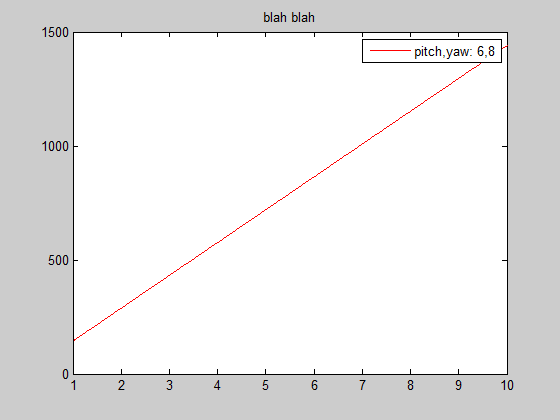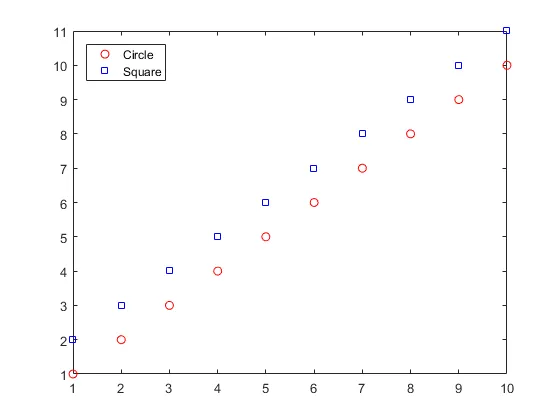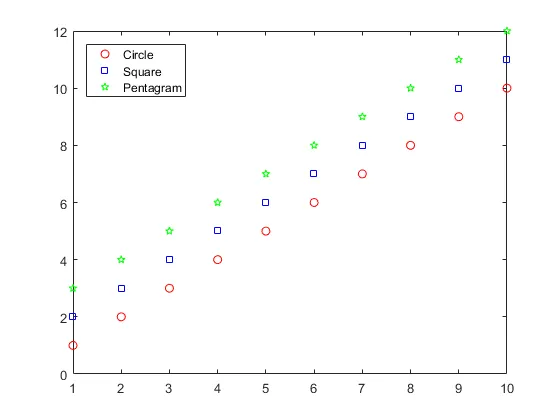我有一个 for i=1:15 的循环。在其中我生成了一个变量 d=1:0.01:10,它是 x 的轴,基于这个轴,我创建了一个连续的函数 F(d),它有两个唯一的变量 pitch 和 yaw。然后,我使用 cmap = hsv(15); 在每次递归中使用不同的颜色进行绘制。
d=1:0.01:10;
cmap = hsv(15);
for i=1:15
pitch = unidrnd(10);
yaw = unidrnd(10);
for j=1:length(d)
F(j) = d(j)*3*pitch*yaw; %// some long calculation here
end
p1 = plot(d,F,'Linewidth', 1.0);
title ('blah blah')
set(p1, 'Color', cmap(i,:));
hold on;
legend (['pitch,yaw:', num2str(pitch) num2str(yaw)])
end
hold off;
这段代码每次递归更新唯一的pitch和yaw值(它们之间没有空格,有点令人不舒服),但未能做到以下两点:
- 应用正常的颜色,如图所示。
- 保留上一次迭代的颜色和pitch,yaw值。



drawnow可能会很有用。 - Luis Mendodrawnow没有任何改变。 - Kots